
–– The newsletter on wine and wine travel ––
–– Read by wine lovers and wine professionals all over the world ––
–– On the internet since 1996 ––
Classifications, do they serve any useful purpose?
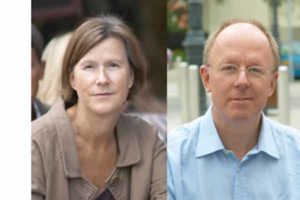 Saint Emilion is updating its classification. But Chateau Cheval Blanc and Chateau Ausone no longer want to be part of it, which is fine. It is voluntary to take part in the new update (scheduled for 2022). It costs money. Applying to join (or stay) in the premier grand cru classé group costs 21,000 euros. It’s cheaper if you don’t want “premier”. Now, of course, it is not the money that has made the region’s two top chateaux decide not to join.
Saint Emilion is updating its classification. But Chateau Cheval Blanc and Chateau Ausone no longer want to be part of it, which is fine. It is voluntary to take part in the new update (scheduled for 2022). It costs money. Applying to join (or stay) in the premier grand cru classé group costs 21,000 euros. It’s cheaper if you don’t want “premier”. Now, of course, it is not the money that has made the region’s two top chateaux decide not to join.
Is this the end of the Saint Emilion’s classification?
It is brave of Saint Emilion to embark on a new update after all the trouble surrounding the previous one. In 2006, eleven chateaux were demoted (from the grand cru classé group). Some of the chateaux sued the entire classification. When the update was finally approved in 2012, eight of them had regained their grand cru classé status. But three had inexorably fallen out. The lawsuits continued.
Furthermore, two chateaux (Pavie och Angélus) were promoted to the highest group, premier grand cru classé A, a group implicitly dedicated to Cheval Blanc and Ausone by virtue of their reputation.
Without Cheval Blanc and Ausone, some of the glory of being in the “A” group will be gone.
Everything that happened in 2006/2012 has put the spotlight on how the chateaux are actually assessed. Is it just about tasting the wines? No, not at all. Only 50% of the total assessment comes from tastings of the last 10 (15 for “premier”) vintages. Equally “important” is the chateau’s reputation, the price of the wines, marketing activities, location, soil, typography, the work in the vineyard and the cellar, ageing cellar, traceability and more. Is that what a “classed” growth is about?
Would it be possible to have a classification based solely on tastings results? But if you taste blind, which I suppose they do, you cannot be sure of anything. And definitely not that Cheval Blanc and Ausone would score the highest points in each update. Therefore, things like price and reputation must be considered for the list to be perceived as reflecting “reality”. (What reality?)
If you then put all the chips on the taste of the wines, classifying according to blind tasting results, you inevitably end up in a different foxhole. The taste, quality, of a wine cannot be assessed objectively. There is no neutral and objective way for people to agree on which wines are “best”. It is fundamentally subjective. Countless tastings show that even the most experienced experts (or consumers) do not agree on what is “quality” in a wine. Taste is inevitably subjective and individual.
A lot can be said about the 1855 classification in Médoc, but it was based on something fair and impartial. The price. Admittedly, such a classification today is not very interesting. It is easy for everyone today to check out what a wine cost. But in the middle of the 19th century, it could undoubtedly be of great help, with no Vivino or Wine-Searcher to turn to.
This is an excellent illustration of the fact that all classifications are meaningless. Or at least meaningless to the consumer. “1855” classifies a building (or a trademark). Saint Emilion ranks history, marketing and taste. But to make a fair and impartial ranking of taste is impossible. Taste is subjective. The Graves region planned to update their classification some years back, but they shelved the project because they couldn’t define criteria that made sense. Other than price.
The primary purpose of classifications is probably to protect those inside from competition from those outside. And make sure consumers pay a little extra for those who are members “the club”.
From a consumer’s point of view, it would be much better if we scrapped all the classifications. They are of no help to the wine-loving consumer.
(Perhaps important to add: a classification is something completely different from an appellation. Classifications are found almost exclusively in Bordeaux. For example, what is called “grand cru” in Burgundy or Alsace is an “appellation”. And grand cru in Champagne is an entirely different story (it’s neither of the two) that we will have to tell you about another time.)
Enjoy the Brief!
Britt & Per
If you appreciate what we do, you can help us:Tell your friends about the Brief or send it to them.
Like us and follow us on social media:
What’s on at BKWine Tours
BKWine is also one of the world’s leading wine tour operators. Here’s what we currently have on our scheduled wine tour program:
- Chile-Argentina, January 17-30, 2022
- South Africa, February 9-18, 2022 plan for 2023
- New Zealand, March 10-25, 2022 plan for 2023
We also make custom designed wine tours.
We’re different than most other wine tour operators. We are people who know wine inside out, who travel constantly in wine regions, who write award winning books about wine. Who do this out of passion. Our tours are different from others. More in wine tours: BKWineTours.com.
Read our books
We have written eleven wine books. Unfortunately, only one of them has been translated to English; the others are (so far) only available in Swedish. This is the one that is available in English:
All our books are on wine, but on different subjects: wines of the Languedoc, wine growing and wine making, the wines of France, Tuscany, Bordeaux, Piedmont, Burgundy, Champagne, France… Several have won prestigious prizes and awards from Gourmand International, OIV and others. Read more on all our wine books.
News from the world of wineWhat’s been happening in the world of wine recently. |
Provence will allow new and old grape varieties
Provence is also preparing to experiment with the Greek varieties agiorgitiko, xinomavro and moschofilero, the Italian nero d’avola and the white verdejo from Spain. Read more (pdf): chambres-agriculture |
Champagne harvest yield in 2021 agreed: 10 tons
It is not yet clear how much of these 10,000 kilos will be harvested this autumn and how much will come from the “réserve individuelle” that the growers can put aside certain years (a type of buffer from previous years when growers have been allowed to harvest over the legal limit; not to be confused with the reserve wines used or blending). Comité Champagne (CIVC) will probably decide this beginning of September. After last year’s decline in sales, champagne producers are happy about excellent sales during the first quarter of this year. Read more: lunion |
The wine giant Château Ste-Michelle in Washington changes owner
|
Australian Rawson’s Retreat changes nationality, becomes South African
TWE has simply moved the production of the wine to South Africa. The wine will be made in the same style but with South African grapes. The bottle and the label will look the same. One can probably assume that the origin will be written in as small letters as possible. Chinese consumers will perhaps not even notice the difference. If we have understood the matter correctly, the South African Rawson’s Retreat will only be for the Chinese market. Read more: vino-joy |
De-alcoholised “wines” will soon be called wines, and have appellations
However, this does not mean that we will soon see a Pauillac or a Côte Rôtie with 0.5% alcohol. It is up to each AOP to decide if they want to implement these rules, and I guess not many will want to do that. But for vin de france and some IGPs (and corresponding in other countries), it may open up new opportunities as the demand for low-alcohol wines increases. (A quick reminder: “vin de france” was previously called “vin de table; IGP was called “vin de pays”, terms that are no longer used.) Read more: vitisphere |
Saint Emilion updates its classification but the two top chateaux jump the ship
There were many problems with the previous update (made in 2006, approved, with some changes, only in 2012) because three chateaux were demoted from the classification and started a lawsuit. What also happened was that two chateaux (Pavie and Angélus) were promoted and admitted into the (until then) almost unattainable premier grand cru classé A, previously dedicated to Cheval Blanc and Ausone. And maybe that’s the problem. Maybe Cheval Blanc and Ausone are afraid that more chateaux will make it into the A-group, and as a result, they will lose their aura of exclusivity. Cheval Blanc and Ausone may not think they need any classification. But can the classification survive without them? Classification otherwise mainly are good for pushing up the prices of the ones that have them. But these two may manage that anyway. |
A new grape variety and lower planting density in Champagne – catastrophe or not?
It has caused outrage in some places. Some believe that the quality of champagne is in danger, others that this will transform the landscape so much that the region’s UNESCO World Heritage is threatened. We have a hard time believing that this change in the rules will be so dramatic and have not seen any persuasive arguments for it. That “high planting density (e.g. 10,000/ha) is vital for the quality” is often said but not well-proven. The same day, the SGV also decided to introduce in Champagne a fungus-resistant grape called Voltis. The growers will be allowed to plant in on a maximum of 5% of their total vineyard surface. Presumably, all this will now have to be rubber-stamped by the INAO. Read more: sudouest |
FeaturesArticles and features published on BKWine Magazine and on our wine travel blog and photography blog in the last month. |
The secrets of blending the perfect champagne cuvée | Britt on Forbes
Read more in Britt’s article on BKWine Magazine, originally published on Forbes: The challenge of tasting still wines, vins clairs, in Champagne – an unusual visit to Champagne J. de Telmont | Britt on Forbes. |
A prosecco that wants to be different, Col Vetoraz
Read more in Åsa Johansson’s article on BKWine Magazine: Col Vetoraz, a prosecco that does not want to be called prosecco. |
Entrepreneurs from Scandinavia make excellent wines in Bordeaux | Britt on Forbes
Read more in Britt’s article on BKWine Magazine, originally published on Forbes: Riku and Anna Väänänen from Finland started a new life when they bought Château Puybarbe in Bordeaux | Britt on Forbes. |
Brunello di Montalcino that is both modern and delicious, from Col d’Orcia
Read more in Britt’s article on BKWine Magazine, originally published on Forbes: Brunello di Montalcino from Col d’Orcia, a tasting with count Francesco Marone Cinzano | Britt on Forbes. |
Unusual grapes from the French South-West, Sud-Ouest; to hold on to one’s identity
Read more in Per’s article on BKWine Magazine: Unique wines and grapes in Sud-Ouest: Gaillac, Cahors, Madiran, Jurançon, Irouléguy, Béarn, Fronton and more. |
South African wines to discover, from cool-climate Elgin Vintners
Read more in Britt’s article on BKWine Magazine: Elgin Vintners: Fabulous South African wines from a cool climate. Travel: Discover the wines of South Africa on a wine tour with BKWine. |
Wine ToursSome information on our current and future wine tours. Book a wine tour with the “world’s top wine tour operator” today (or when you feel like travelling to wine country). |
South America: Let the wines from Argentina and Chile surprise you| wine tour in South America
Our tour starts in Buenos Aires, a bustling city where the European heritage mix with America in an exciting way. We end in the Chilean capital Santiago. We will experience Argentine tango, Mendoza with its malbec wines (but not only), the cool climate regions on the Chilean coast, the famous harbour city of Valparaiso, the small town of Santa Cruz, the well-known red wine regions of Colchagua and Apalta. We will, of course, taste lots of wines. You will be surprised by the high quality and the great diversity. Join us on our wine tour to South America! Wine tour to Chile-Argentina, January 17-30, 2022. Book your wine tour with us now! |
South Africa’s exciting wines and magnificent landscape | wine tour in South Africa
Our tour is in February when the growers are preparing for harvest. Maybe they have already started to harvest some white grapes. There will be a lot of activity in the vineyards and the cellars. We will visit Franschhoek, Stellenbosch, Walker Bay and the charming town of Hermanus down by the south coast and Swartland up in the north; a warm region praised for its avant-garde wines. We start the tour in Cape Town, a stunning city. We will, of course, include a visit to Table Mountain to admire the view. We will enjoy local food, and many of our meals will be at the vineyards. South Africa is worth going to. Wine tour to South Africa, February 2023. Book your wine tour with us now! Please note: The situation in South Africa is not yet stable. We will probably not be able to do this wine tour in South Africa in February 2022 due to the covid-19 situation. But long-term planning is fun, so let yourself be inspired by the program linked above and start planning for February 2023 now. We will announce the dates soon. |
A magnificent and unusual wine country, an unforgettable journey | wine tour in New Zealand
New Zealand is far away from everything. Therefore, this tour is the longest we have on our program. But maybe it will still feel short. There is so much to see. We combine producer visits and wine tastings with Maori culture, geysers, glaciers and sightseeing in, for instance, Wellington, the capital. On the North Island, we go to Hawke’s Bay and Wairarapa before taking the ferry to the South Island, where the first wine region will be the well-known Marlborough with its extensive sauvignon blanc vineyards. We also have Central Otago, with its lovely pinot noir wines – and spectacular nature – on the program. Our bus will take us all the way from Auckland down to Queenstown. Wine tour to New Zealand, March 10-25, 2022. March 2023 Book your wine tour with us now! Please note: There will be no tour to New Zealand in 2022. The borders are currently closed and will not open in time for the 2022 wine tour. But we have already started planning for 2023, and we hope you will do the same. More information coming soon! |


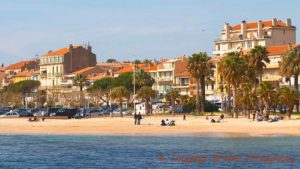 The producers of Provence are ready to try new grape varieties that are more resistant to drought and disease. By 2022, several new ones will probably be allowed in limited quantities. One of them is caladoc, a relatively new crossing between grenache and malbec that has already had success in the Languedoc. Another is rousseli, an old Provence variety for rosé wine also called rosé du var (after the department of Var in Provence). Today it is almost extinct because it was not considered good enough quality with its pink grapes and low potential alcohol content. But these are properties that today are considered an asset.
The producers of Provence are ready to try new grape varieties that are more resistant to drought and disease. By 2022, several new ones will probably be allowed in limited quantities. One of them is caladoc, a relatively new crossing between grenache and malbec that has already had success in the Languedoc. Another is rousseli, an old Provence variety for rosé wine also called rosé du var (after the department of Var in Provence). Today it is almost extinct because it was not considered good enough quality with its pink grapes and low potential alcohol content. But these are properties that today are considered an asset.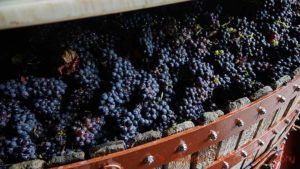 In July every year, the houses and growers in Champagne agree on the year’s harvest yield. A curious regulation in this region. In 2021, it will be 10,000 kilos per hectare (approx. 64 hl/ha). The harvest is expected to begin in the second week of September. However, given all the weather problems that have been so far (frost, rain, downy mildew), not all growers will be able to harvest 10,000 kilos. Perhaps some now regret the low yield limit last year.
In July every year, the houses and growers in Champagne agree on the year’s harvest yield. A curious regulation in this region. In 2021, it will be 10,000 kilos per hectare (approx. 64 hl/ha). The harvest is expected to begin in the second week of September. However, given all the weather problems that have been so far (frost, rain, downy mildew), not all growers will be able to harvest 10,000 kilos. Perhaps some now regret the low yield limit last year. 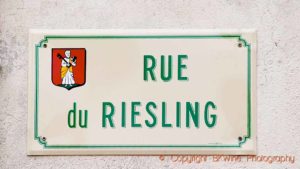 Washington-based Sainte-Michelle Wine Estates has recently been sold. The tobacco company Atria (which owns Philip Morris, among others) has owned the company for 40 years but has now sold it to a venture capital company. The deal is expected to be finalised during the second half of this year. Ste Michelle is one of the big names in the US wine industry. They say that they are the country’s third-largest wine producer and are the largest by far in Washington in the Pacific North West. Here they account for around 60% of the state’s wine sales in volume. They are said to be the world’s largest producer of riesling. They make wine on approximately 12,000 hectares in Washington, Oregon and California. Among their well-known brands are Chateau Ste Michelle, 14 Hands and Columbia Crest. In 2007, the company acquired the well-known Stag’s Leap in California. The headquarters are in Woodinville, just outside of downtown Seattle. Read more:
Washington-based Sainte-Michelle Wine Estates has recently been sold. The tobacco company Atria (which owns Philip Morris, among others) has owned the company for 40 years but has now sold it to a venture capital company. The deal is expected to be finalised during the second half of this year. Ste Michelle is one of the big names in the US wine industry. They say that they are the country’s third-largest wine producer and are the largest by far in Washington in the Pacific North West. Here they account for around 60% of the state’s wine sales in volume. They are said to be the world’s largest producer of riesling. They make wine on approximately 12,000 hectares in Washington, Oregon and California. Among their well-known brands are Chateau Ste Michelle, 14 Hands and Columbia Crest. In 2007, the company acquired the well-known Stag’s Leap in California. The headquarters are in Woodinville, just outside of downtown Seattle. Read more: 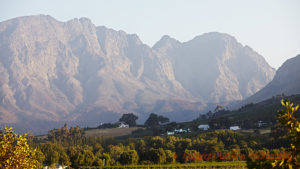 Sometimes “terroir” does not matter so much. The Australian wine giant Treasury Wine Estates, which owns Penfolds and other brands, has taken drastic measures to survive the high tariffs imposed by China on Australian wine. Their bestseller in China is Rawson’s Retreat, and this wine will now, according to Nathalie Wang at Vino Joy News, no longer come from Australia but from South Africa.
Sometimes “terroir” does not matter so much. The Australian wine giant Treasury Wine Estates, which owns Penfolds and other brands, has taken drastic measures to survive the high tariffs imposed by China on Australian wine. Their bestseller in China is Rawson’s Retreat, and this wine will now, according to Nathalie Wang at Vino Joy News, no longer come from Australia but from South Africa.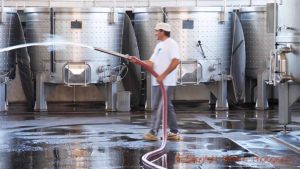 The EU has long had restrictive regulations regarding de-alcoholising wines. This is about to change. Non-alcoholic (de-alcoholised) “wines” will probably soon be allowed to call themselves wine. And they will be allowed to keep their AOP or their IGP. This is an EU decision (in other words, a decision by the 27 member countries), although some details remain to be discussed. The minimum alcohol content for wine has up until now been 8.5% (with some exceptions). According to the soon to be rules, AOP and IGP wines can be de-alcoholised to 0.5% and wines without geographical origin down to 0%. However, it must be stated on the label that the wine has been entirely or partially de-alcoholised. It is not yet clear which techniques may be used, except that adding water will not be allowed.
The EU has long had restrictive regulations regarding de-alcoholising wines. This is about to change. Non-alcoholic (de-alcoholised) “wines” will probably soon be allowed to call themselves wine. And they will be allowed to keep their AOP or their IGP. This is an EU decision (in other words, a decision by the 27 member countries), although some details remain to be discussed. The minimum alcohol content for wine has up until now been 8.5% (with some exceptions). According to the soon to be rules, AOP and IGP wines can be de-alcoholised to 0.5% and wines without geographical origin down to 0%. However, it must be stated on the label that the wine has been entirely or partially de-alcoholised. It is not yet clear which techniques may be used, except that adding water will not be allowed.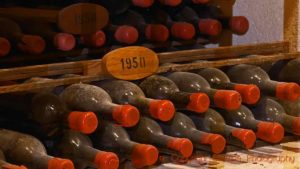 Classification of wine estates is notoriously tricky. (And of debatable or no value to consumers.) In 2022, Saint Emilion will update its classification, and the drama has already started. When the application for participation in the classification expired on June 30, the two top Chateau Cheval Blanc and Chateau Ausone, had not submitted their application. In other words, they now choose to stand outside the classification.
Classification of wine estates is notoriously tricky. (And of debatable or no value to consumers.) In 2022, Saint Emilion will update its classification, and the drama has already started. When the application for participation in the classification expired on June 30, the two top Chateau Cheval Blanc and Chateau Ausone, had not submitted their application. In other words, they now choose to stand outside the classification.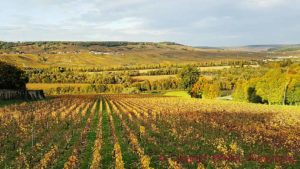 The Growers’ Association (Syndicat Général des Vignerons, SGV) in Champagne decided on July 29 to allow vineyards with lower planting density from 2023. Today it is mandatory to have at least 1.50 meters between the rows. Most vineyards have around 8000 plants per hectare. The new rules will allow to have 2 to 2.2 meters (approximately 5000 plants/ha). The height of the vines will then be around 2 meters, compared to today’s 1.2 to 1.3 meters. It is, of course, about climate change. Experiments with lower density have been conducted for the past ten years. They show that the vines have better resistance to drought and that the acidity is better preserved in the grapes. The vines are also less sensitive to spring frosts. Not least, the work in the vineyard will be easier. Carbon dioxide emissions are said to be reduced by 20% thanks to more efficient tractors than those used today.
The Growers’ Association (Syndicat Général des Vignerons, SGV) in Champagne decided on July 29 to allow vineyards with lower planting density from 2023. Today it is mandatory to have at least 1.50 meters between the rows. Most vineyards have around 8000 plants per hectare. The new rules will allow to have 2 to 2.2 meters (approximately 5000 plants/ha). The height of the vines will then be around 2 meters, compared to today’s 1.2 to 1.3 meters. It is, of course, about climate change. Experiments with lower density have been conducted for the past ten years. They show that the vines have better resistance to drought and that the acidity is better preserved in the grapes. The vines are also less sensitive to spring frosts. Not least, the work in the vineyard will be easier. Carbon dioxide emissions are said to be reduced by 20% thanks to more efficient tractors than those used today. 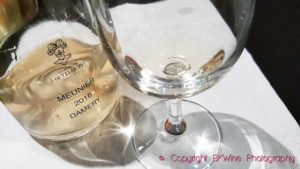 To blend a champagne to perfection demands a good nose and experience. When we drink the finished product, the bubbles play a significant part in the overall experience. They add freshness and a special sensation in the mouth. The winemakers are, of course, blending still wines, not sparkling wines. They can have hundreds of still wines to blend, from different grapes, villages and vintages. The challenge is to find the right balance.
To blend a champagne to perfection demands a good nose and experience. When we drink the finished product, the bubbles play a significant part in the overall experience. They add freshness and a special sensation in the mouth. The winemakers are, of course, blending still wines, not sparkling wines. They can have hundreds of still wines to blend, from different grapes, villages and vintages. The challenge is to find the right balance.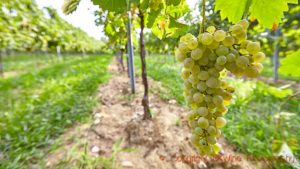 The Prosecco bubble does not seem to want to burst. Consumption of sparkling wine from Veneto, in north-eastern Italy, does not appear to be declining. In 2009, the area for production was expanded and recently a pink variant, prosecco rosato, was added. But several voices are critical, especially in the original areas of Conegliano and Valdobbiadene. Some producers today choose to remove the name prosecco from their labels so as not to be associated with what they believe are only market-adapted wines of often low quality. One of these is Col Vetoraz, which recently launched a series of new wines.
The Prosecco bubble does not seem to want to burst. Consumption of sparkling wine from Veneto, in north-eastern Italy, does not appear to be declining. In 2009, the area for production was expanded and recently a pink variant, prosecco rosato, was added. But several voices are critical, especially in the original areas of Conegliano and Valdobbiadene. Some producers today choose to remove the name prosecco from their labels so as not to be associated with what they believe are only market-adapted wines of often low quality. One of these is Col Vetoraz, which recently launched a series of new wines.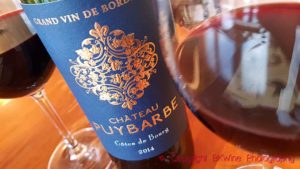 We sometimes come across people from the Nordic countries who have changed careers and are now seen among the vineyards somewhere in Europe. Riku Väänänen left Finland around five years ago and now owns and runs Château Puybarbe in Bordeaux together with his wife, Anna. They bought the chateau in 2014. Now, they are about to become organically certified, and they are actively working with different ideas about sustainability. And, not to forget, they make excellent wines.
We sometimes come across people from the Nordic countries who have changed careers and are now seen among the vineyards somewhere in Europe. Riku Väänänen left Finland around five years ago and now owns and runs Château Puybarbe in Bordeaux together with his wife, Anna. They bought the chateau in 2014. Now, they are about to become organically certified, and they are actively working with different ideas about sustainability. And, not to forget, they make excellent wines.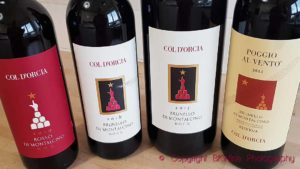 Col d’Orcia in Montalcino is one of our favourite producers to visit on our wine tours to Tuscany. Recently we tasted several of the estate’s Brunello di Montalcino wines together with the owner, count Francesco Marone Cinzano. He talked about organic farming, biodiversity, research on sangiovese clones and much more.
Col d’Orcia in Montalcino is one of our favourite producers to visit on our wine tours to Tuscany. Recently we tasted several of the estate’s Brunello di Montalcino wines together with the owner, count Francesco Marone Cinzano. He talked about organic farming, biodiversity, research on sangiovese clones and much more.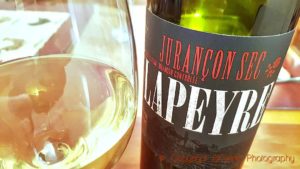 If you look at wines from the so-called New World, you can easily get the impression that there are no other grape varieties than chardonnay, sauvignon blanc and cabernet sauvignon. Of course, there is nothing wrong with these grapes. Still, I would also like to promote lesser-known grape varieties and strike a blow for the regions that make an effort to preserve traditional grape varieties and that a classic regional character of the wines is maintained. Few districts in France can showcase so many “own” and “unique” grape varieties as the southwestern part of France, le Sud-Ouest. Grapes such as mauzac, malbec, tannat, braucol and petit manseng make their mark on the wines. So let us take a closer look at some of these not so well-known but very exciting wine regions, and wines, that we can find in France’s South-West.
If you look at wines from the so-called New World, you can easily get the impression that there are no other grape varieties than chardonnay, sauvignon blanc and cabernet sauvignon. Of course, there is nothing wrong with these grapes. Still, I would also like to promote lesser-known grape varieties and strike a blow for the regions that make an effort to preserve traditional grape varieties and that a classic regional character of the wines is maintained. Few districts in France can showcase so many “own” and “unique” grape varieties as the southwestern part of France, le Sud-Ouest. Grapes such as mauzac, malbec, tannat, braucol and petit manseng make their mark on the wines. So let us take a closer look at some of these not so well-known but very exciting wine regions, and wines, that we can find in France’s South-West.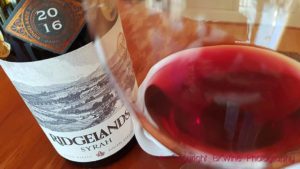 In just a few years, the South African region of Elgin has made a name for itself as an exciting place for grapes such as pinot noir, syrah, chardonnay and sauvignon blanc. It is supposedly the coolest wine region in South Africa, thanks to the cooling effects of the ocean winds. We have tasted some delicious wines from Elgin Vintners, a pioneer producer in the area.
In just a few years, the South African region of Elgin has made a name for itself as an exciting place for grapes such as pinot noir, syrah, chardonnay and sauvignon blanc. It is supposedly the coolest wine region in South Africa, thanks to the cooling effects of the ocean winds. We have tasted some delicious wines from Elgin Vintners, a pioneer producer in the area.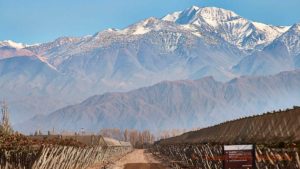 Our popular and spectacular South America tour takes you to Buenos Aires, Mendoza, Viña del Mar, Casablanca, Colchagua and Valparaiso. We will cross the magnificent Andes by bus. The border between Argentina and Chile is splendidly situated at an altitude of 3000 meters.
Our popular and spectacular South America tour takes you to Buenos Aires, Mendoza, Viña del Mar, Casablanca, Colchagua and Valparaiso. We will cross the magnificent Andes by bus. The border between Argentina and Chile is splendidly situated at an altitude of 3000 meters.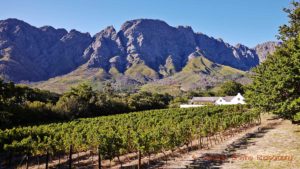 South Africa has so much to offer, both in terms of wine, exciting winemakers and nature. The quality of the wines has developed enormously in recent years. Consumers finally realise that the country can do much more than inexpensive mainstream wines. But it has taken time, and there is still a lot to do. On our South Africa tour, we meet a plethora of producers who make exciting and high-quality wines with character.
South Africa has so much to offer, both in terms of wine, exciting winemakers and nature. The quality of the wines has developed enormously in recent years. Consumers finally realise that the country can do much more than inexpensive mainstream wines. But it has taken time, and there is still a lot to do. On our South Africa tour, we meet a plethora of producers who make exciting and high-quality wines with character.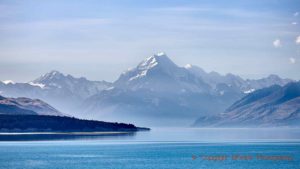 Our wine tour in New Zealand is a magnificent 2-week trip that shows a big part of the country. We will visit many of the wine regions. The variety of wine styles is impressive despite the dominance of sauvignon blanc and pinot noir.
Our wine tour in New Zealand is a magnificent 2-week trip that shows a big part of the country. We will visit many of the wine regions. The variety of wine styles is impressive despite the dominance of sauvignon blanc and pinot noir.






